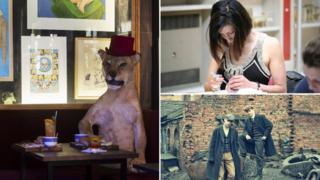 Image copyright Oskar Proctor/ G.W.Smith/ Black Country Living Mus
Image copyright Oskar Proctor/ G.W.Smith/ Black Country Living Mus Fancy learning how to practise taxidermy on roadkill? Or visiting the lawnmowers of the rich and famous? As our arts centres and museums suffer funding cuts, several are seeking innovative ways to increase income and footfall. But can quirky fundraisers keep our tourist attractions afloat?
Years ago, a day out at a museum may have meant trawling round glass cases full of dusty but worthy exhibits, before stopping in the teashop for a stale scone and a lukewarm drink.
But pitch up at some of England’s museums nowadays and you could find yourself wandering into a film set or a cocktail bar.
 Image copyright PA
Image copyright PA Funding cuts have meant England’s 1,300 accredited museums have had to find imaginative ways to raise money.
Indeed, the former head of Arts Council England, Sir Peter Bazalgette, suggested museums go even further if they want to survive.
He said theatres should open charity shops, art galleries should run bed and breakfasts and museums should become film sets to make more money.
Sir Peter pointed to examples such as the Roses Theatre in Tewkesbury, which runs a charity shop and Islington Mill, an arts centre in Salford, which runs a B&B.
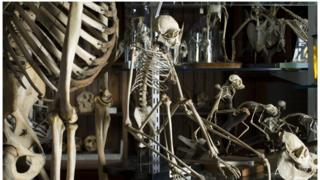 Image copyright UCL Grant Museum of Zoology/Matt Clayton
Image copyright UCL Grant Museum of Zoology/Matt Clayton Alistair Brown, policy officer for the Museums Association, the sector’s membership organisation, said: “Lots of museums are looking at new ways to generate income and are being quite creative about it.
“But it’s probably a mistake to think that is the best way of saving them. The levels of income they are losing through cuts are greater than the amount they are able, in the short term, to raise through entrepreneurial activities.”
So what are the quirkiest ways museums have found of raising funds? And is opening a guesthouse or running as a film set feasible for all of them?
Laughs in the library
 Image copyright UCL Grant Museum of Zoology/Matt Clayton
Image copyright UCL Grant Museum of Zoology/Matt Clayton An Edwardian library jam-packed with animal skeletons and jars of pickled frogs might not seem, on the face of it, a barrel of laughs.
But the Grant Museum of Zoology, in London, decided its quirky setting was the perfect location to stage stand-up comedy gigs.
“It’s a cabaret-style comedy night. We hold three of them a year and they are hugely popular,” said Jack Ashby, the museum manager.
“The events are compred by a professional comedian who introduces different members of staff to the audience. We have people working here who get particularly nerdy about animals nobody has ever heard of – and audiences find that pretty entertaining.”
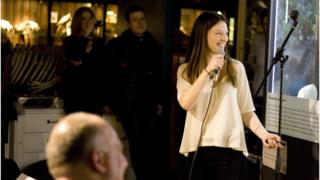 Image copyright UCL Grant Museum of Zoology
Image copyright UCL Grant Museum of Zoology The museum holds other events, such as improvised opera nights and animal adoption schemes, to raise funds and make its displays of everything from elephant skulls to jars of tapeworms slightly more accessible.
But Mr Ashby has a word of caution as museums try to diversify.
“Museums have to think very carefully about what they can do to make money,” he said.
“Some museums take a significant amount from weddings or corporate hire but you really have to invest in the staff to support those events. And realistically, you can only offer your venue as a film set if there is a film industry in your town or city.”
Films and flat caps
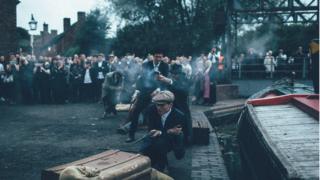 Image copyright Black Country Living Museum
Image copyright Black Country Living Museum Several museums have sought extra funds by offering up their locations as film sets.
“We’ve always had filming at the museum,” said Laura Wakelin, deputy chief executive of the Black Country Living Museum in Dudley. “But previously it was much more sporadic.
“When I arrived in 2013, we decided we needed to start actively promoting the museum as a unique venue for filming.”
Since then, the museum has famously been the backdrop for BBC drama Peaky Blinders and the ITV period adaptation Arthur and George, as well as reality shows and a Bollywood movie.
In 2015 alone, filming raised about 50,000 for the museum, which has also capitalised on its raised profile in other ways.
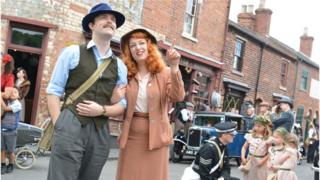 Image copyright Black Country Living Museum
Image copyright Black Country Living Museum “As Peaky Blinders took off, we started to see flat caps in our gift shop and we run Peaky Blinders nights,” said Miss Wakelin. “They usually sell out and bring in a slightly younger demographic.
“It’s about finding what works for your venue. Yes, we have wonderful assets here but we are in the middle of quite an economically disadvantaged area so we do have to pitch these things right.”
The taxidermy workshops
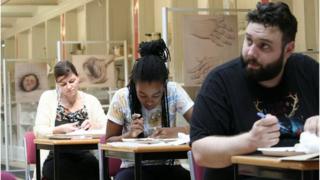 Image copyright G.W.Smith
Image copyright G.W.Smith The idea of setting up as a bed and breakfast or a film set might be tempting if your attraction is charmingly photogenic.
But such ventures would not work for every location, explains Carla Valentine, technical curator of the Pathology Museum, in London.
“This isn’t the kind of museum that has space to be a B&B and we couldn’t do that anyway as it contains human remains,” she said.
However, the museum, which showcases medical specimens owned by Queen Mary University London, does put on macabre fundraising events.
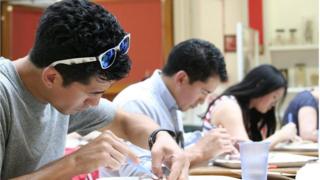 Image copyright G.W.Smith
Image copyright G.W.Smith Among the most successful have been its Stuff and Nonsense beginners’ taxidermy classes.
Amanda Sutton, who runs them, said: “They are very popular and tend to sell out. I think it’s the experience of doing something so unusual that appeals to people.
“We are running a special class for Valentine’s Day. People come as couples and work together on their animals, which is quite sweet in a weird kind of way.
“When we set these classes up, some other London museums didn’t seem to think it was very appropriate but they have now started running their own weird events. I don’t think museums can just run stuffy events for academics – they need to appeal to the general public.”
Cocktails and crowdfunding
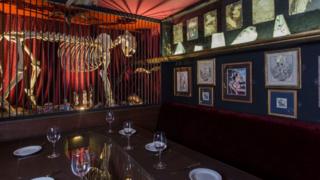 Image copyright Oskar Proctor
Image copyright Oskar Proctor Of course, online communities bring added scope for museums to reach out to like-minded enthusiasts and nowhere is this better demonstrated than in a Hackney basement, which plays home to London’s Museum of Curiosities.
The museum, which revels in the incoherence of its collections – ranging from dodo bones to fast food collectables – was initially funded by 500 people on Kickstarter and it has also used crowdfunding to add to its displays, most notably with a mummy.
Its premises include a small cocktail bar, which it hires out to raise funds. Mr Wynd also meets running costs via sponsorship.
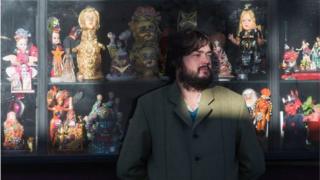 Image copyright Oskar Proctor
Image copyright Oskar Proctor Founder Viktor Wynd is passionate about such enterprises being relatively self-reliant.
“The government’s involvement in the arts is often disastrous,” he said. “It creates vast bureaucracies and the money would be better spent on the police or NHS.
“Museum culture in the UK has centred around the misguided idea that funding should only come from the government, meaning that most cultural bodies put huge amounts of resource into getting grants – resources that if applied successfully to raising money from the private sector would probably do just as well.
“I believe the government ought to support a handful of major national collections – but even those should be encouraged to generate as much of their revenue as possible.”
Celebrity lawnmowers
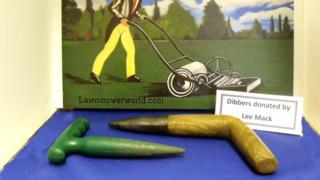 Image copyright British Lawnmower Association
Image copyright British Lawnmower Association Diversifying some museums would be a push too far, according to Brian Radam, the curator of the British Lawnmower Museum in Southport.
“I can’t see the British Lawnmower Museum becoming the latest blockbuster set – especially as most of our exhibits were destined for the scrapyard,” he said.
“As for the idea of a B&B – well, they would be extremely uncomfortable to sleep on.”
Finding funding to keep the museum going is exhausting work, Mr Radam says.
“Over the last 25 years we have become experts on saving money, running the museum on a shoestring,” he said.
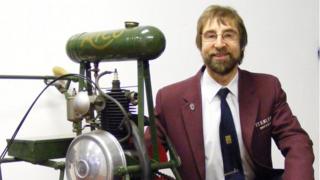 Image copyright British Lawnmower Museum
Image copyright British Lawnmower Museum The venue does not receive public funding so relies on its visitors and innovative ideas to secure its future.
As well as ticket sales, the museum also makes money through restoring beloved family grass-cutting heirlooms.
“One of our ideas was to create an exhibition of lawnmowers of the rich and famous,” said Mr Radam.
“We had Prince Charles and Princess Diana’s mower, Brian May’s and Albert Pierrepont’s on display,” he said.
“Lawnmowers are not the sexiest of subjects but the exhibition created a lot of interest and revenue.”
But as museums and public arts venues face significant financial pressures, is it realistic to say that all can find ways to raise funds independently?
The Museums Association believes there are more than 2,500 museums across the UK but says more than 60 have closed in the past 10 years.
“The bulk of closures are happening in areas that are less well-off, where there has been a severe decline in public spending,” said Mr Brown.
“We have also seen several museums opening over that time – these tend to be small, independent museums that are volunteer-run.
 Image copyright Museums Association
Image copyright Museums Association “A lot of our museums date from the 19th Century at a time of great national and civic pride.
“I don’t think the number of museums is unsustainable but clearly there is a trend for some types of museums – particularly those run by local authorities – to close at the moment.
“It feels as if museums are being asked to make an extremely quick transformation into business organisations, but that can’t take place overnight.
“There’s also a philosophical question about what the role of museums is and the extent to which they should be focusing their energies on generating income or on their public role of inspiring and educating people.”
